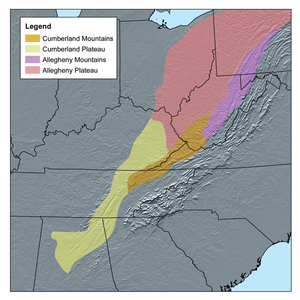 |
| Albert Stewart, Poet, Hero, Teacher, Mentor |
Appalachian poet and hero Albert Stewart lived the great majority of his life from birth to death on Yellow Mountain in Knott County Kentucky. He left to go to college, both as a student and a professor, for a few years. When he returned in maturity, he never left again and spent a major portion of his energies striving to protect his beloved homeland from development, mining, and highway destruction. He won most of those battles except for the destruction caused by a four lane highway which split the farm before his death and a nearby mine on land which he did not own. In preparation for his death, he willed the land to the University of Kentucky for use as a research farm in an effort to perpetually protect the land.
Over the course of more than twenty years, I would travel to Yellow Mountain to spend time with Al and still stop by the spot from time to time to walk, ruminate, and consider the work Albert Stewart did in his long and productive life as a writer, teacher, magazine editor, environmentalist, and mentor to dozens of young Appalachian writers and artists. I also had the pleasure of taking another friend, Appalachian Poet and Philosopher P. J. Laska to Yellow Mountain to introduce the two.
Albert Stewart is buried along with his parents, grandparents, and a few other relatives in a small cemetery on the property on the east side of Kentucky Highway 80. The old log house in which he spent most of his life still sits on the west side of Kentucky Route 80. Highway 80 is a four lane thoroughfare which split the farm decades ago and represents the one major defeat Al suffered in his effort to protect the land. Just a half mile or so away is a large coal mine on land which Albert Stewart did not own. That also represents a loss. But Al Stewart was able to arrange for the long term protection of most of the family farm. In that respect, he was more successful than most Appalachian environmentalists have ever been.
For me, the trip to Yellow Mountain represents many things. It helps me to remember one of the most impressive humans I ever knew and to honor that memory. It helps me to renew and revitalize my commitment to keep working to protect Appalachia and Appalachian culture. And it gives me some time in a quiet, peaceful (except for the highway noise) place to think, formulate and refine ideas, and to relax from too frequent interactions with a world which has too little knowledge of or respect for the land, the people, the culture of Appalachia.
There is no place on the planet which better personifies the concept of Appalachian love of place than Yellow Mountain. Albert Stewart was deeply affected by his life on Yellow Mountain and by the lives there of his ancestors before him. Yellow Mountain was deeply ingrained in his soul and he is deeply ingrained in Yellow Mountain. His poetry is replete with images, poems, narratives, and people from Yellow Mountain. For me and others who knew Al, Yellow Mountain is replete with images and memories of Albert Stewart. They will be intertwined forever in the minds of people who have been fortunate enough to go there.
You will find Yellow Mountain on Kentucky Highway 80 between Garrett and Hindman. It is marked by a University of Kentucky sign on the side of the road and the little vacant church and cemetery on the left side of the road. The old log house sits in the little bottom a few hundred feet from the highway. Go there; stop; pack a picnic lunch; hike in the woods; take a copy of Al's poetry and read it where most of it was written. Visit Al's grave and thank him for his work to preserve Appalachia. Sit on the porch of the little church and think about what you can do to protect the land, the culture, and the people. Then make a personal commitment to do what you can to make the world and Appalachia a better place before you leave.
 |
| Central/Southern Appalachia |
4 comments:
I bought a rocking chair, handmade, from a man from the Kingdom of Yellow Mountain. The cost was something amazing-25 bucks, 50 bucks, something like that. The year was 1979. Can you remember the chairmaker's name?
By the way, I knew Al Stewart a bit the year I taught at Alice Lloyd College , 1978-79.
Mr. Coughlin: I left a message about this on a Face Book page about the Hiram Stamper House near Al's old place. I also left a link to your blog for people to respond since I don't have your E-mail address. Maybe somebody will come up with the name. Here is the link to the Hiram Stamper House page. https://www.facebook.com/groups/573519776030186/
I just thought of one more thing. I think it was Al who took me to an old cemetery, probably at Yellow Mountain. We saw lots of graves of babies who died young or very soon after birth. At the time I wondered if it was because of some kind of Rh incompatibility, which is easily treated now.
I was so lucky to meet Al.
Bob Coughlin
Mr. Coughlin: My E-mail is public knowlege. I would love to converse with you since I think we have some common interests. Send me a message at rchicks@mrtc.com If you need to check my reputation, you can do a Google search on the phrase "Roger Hicks Appalachia". You will find a few pieces of fiction and nonfiction online along with one or two mentions in books. Roger
Post a Comment